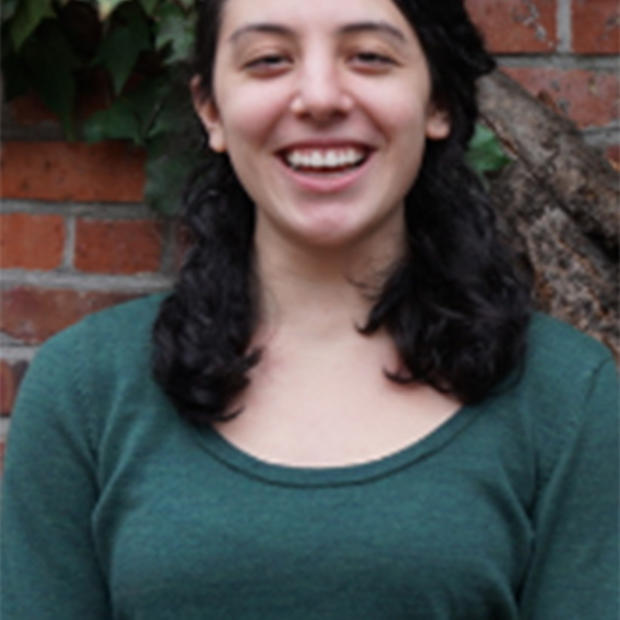“By virtue of being a human,” announced Artefact design group's Masuma Henry on Saturday, “I believe that we’re all designers.”
Henry, a well-known Seattle designer and strategist at Artefact, was addressing a crowd at the central Seattle Public Library about what it means to “design for positive change.” Her talk was just one of about 80 events happening throughout the city as part of the two-week Seattle Design Festival. This last weekend, the library donated all of their meeting spaces to the festival, with the requirement that all programs be free and open. Last weekend alone, 877 people attended.
Founded four years ago, the design festival is primarily put on by Design in Public — a strategic initiative of AIA Seattle. The festival has grown quickly since it got its start in 2011: What was once a gathering of 12 partner groups — able to produce about 20 programs — has expanded into a two week festival with 60 partner groups and approximately 80 programs. According to Katherine Wimble, Associate Director of Design in Public and Director of the festival, 7,300 people have attended this year’s events so far.
That impressive crowd of festivalgoers didn’t stop short of Henry’s talk on Saturday, which packed the room. “If you solve problems creatively, you’re a designer,” she reiterated, “And as designers, we have a lot of responsibility and a lot of privilege.”
For those who aren't well versed in design thinking or lingo, Henry’s talk was an accessible and sweeping overview of modern design, culminating in her personal focus — outcome-based design.
“Yesterday, we thought about technology first … about technology and innovations and designing for them … Right now, we think, 'Ok, we have great technology, let’s design experiences. And then we’ll deal with the outcomes that result'…I’m proposing, and Artefact is proposing as a design philosophy, that we focus on outcomes-based thinking first.”
In approaching problems this way, Henry suggested, designers will create products and systems that will have a positive impact on society.
Take, for example, Dialog, a wearable module designed to alert people with epilepsy to the possibility of oncoming seizures, or Juice Box, a portable battery-like device designed to provide electricity to families in remote parts of developing countries, where outlets are scarce. (Not incidentally, both are Artefact products.)
Which raises the question: What, precisely, defines “positive change?” Positive outcomes are fine in theory, but in practice outcomes of human-centered design can be positive for some and not for others — or for people in the short-term, but not the long-term. What happens when what’s positive for humans as an experience is not what’s positive for the environment?
“I like to think about it as the difference between 'User-centered design' and 'Human-centered design' ..." Henry explained in an email later. "In my experience, when we think about the user, we focus on answering questions around ‘What does that person want? Need? Desire? Aspire to?’"
On the other hand, if our foundational thinking focuses on humans, this leads us to ideas that are aligned with our goal of long-term positive outcomes. We start with questions like ‘What is good for humans? What isn’t working for us right now? What does the ideal human state look like?’ Design for positive outcomes means designing for holism — humans, their interactions with each other, and the world that they live in.”
 Of course, the definition of an 'ideal human state' is subjective. A point that one audience member raised when she asked why Henry was “sidestepping the whole thing of capitalism and money” and “gently not talking about capitalism.”
Of course, the definition of an 'ideal human state' is subjective. A point that one audience member raised when she asked why Henry was “sidestepping the whole thing of capitalism and money” and “gently not talking about capitalism.”
It was a fair question. Lofty ideas aside, the thrust of Henry's talk was more or less the same as her company’s design and business philosophy. And most of the examples she cited were Artefact projects.
“It comes up often,” Henry replied, “…but being a small business owner…you have the ability to say no. We say no to work when we feel like we’re not spiritually or philosophically aligned to the kind of work a client might want to do.”
Her main goal though, was not to remedy the ills of capitalism, but to inspire the average citizen to think more like a designer; a goal shared by the Seattle Design Festival, which ends on September 19th.
“An event like SDF creates community awareness not only about how professional design can help us live more harmoniously in our shared environment,” Henry reflected, “but also allows us to promote and encourage the citizen designer in all of us.”
And Wimble recalled a moment recently when she passed a collection of furniture at 3rd and Stewart, created during the SDF block party.
“Some of those installations [from the block party] have made their way out into the public realm,” she said, “And I saw ladies pushing the furniture around, reconfiguring it so it was the way they liked.”
Perhaps there is a little designer in us all.

